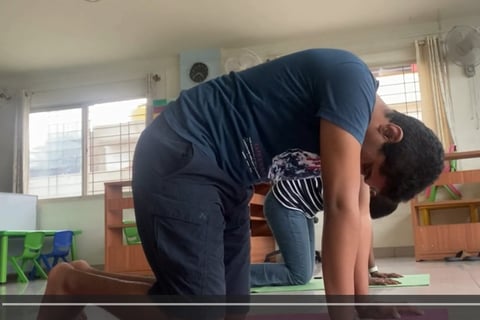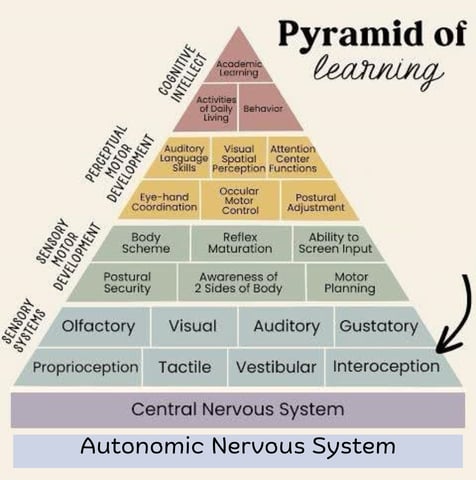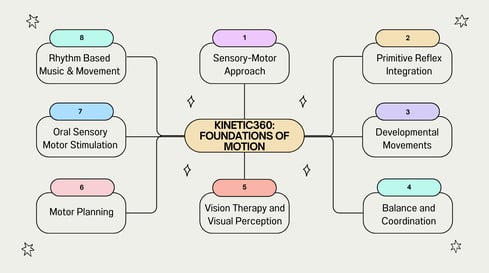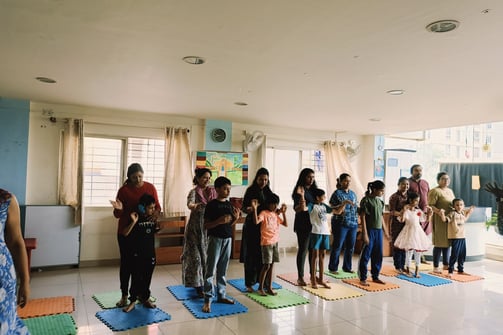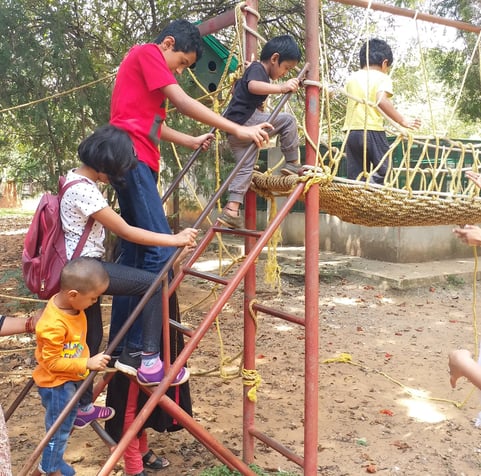Transformative Programs with Mini: Changing Lives!
Is your child diagnosed with Autism recently or some time back?
Are you Ready?
Your child isn't talking?
Your child isn't writing?
Your child isn't playing with others?
Your child has rigid or repetitive behaviors?
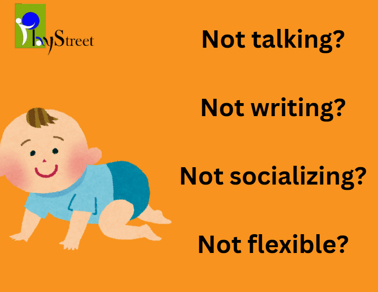

As a parent, discovering that your child has autism can be overwhelming. You might feel a mix of confusion, fear, and uncertainty. You see these challenges every day and wonder what they mean for your child's future. You might worry about their ability to communicate, make friends, and succeed in school. The diagnosis brings a flood of questions and concerns, and it's natural to feel unsure about what steps to take next.
These are indeed significant concerns. But let me share something even more crucial. The biggest challenge isn't just these issues—it's that your child isn't learning naturally from you or their environment.
Are you worried about your child's development?
Perhaps you've noticed some of these challenges:
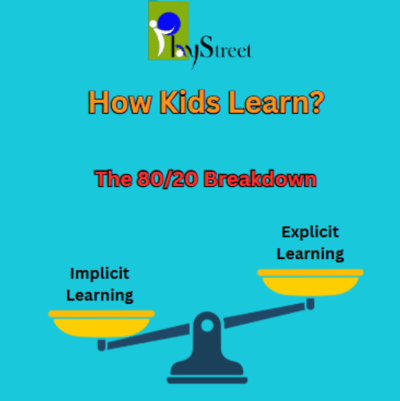

Here’s the truth: Your child should be able to learn 80% of the essential life skills directly from you, naturally, and almost effortlessly through the process of coregulation—a type of learning that happens through connection, observation, and interaction. This kind of learning is called implicit learning, where children pick up skills just by watching and experiencing daily life. The remaining 20% can be taught through structured methods like school or therapies, which is called explicit learning.
Poor Observation: Your child may not be noticing or picking up cues from their environment.
Poor Imitation: They struggle to mirror actions, which is a critical part of learning.
Limited Joint Attention: The ability to share focus with others is underdeveloped.
Weak Referencing: They aren’t naturally looking to parents or others for guidance or cues.
Sensory Processing Challenges: Their ability to process and respond to sensory input is often disrupted, making it harder for them to engage.
Motor Deficits: These prevent independence and make even simple tasks feel overwhelming.
Feeling of Safety: The child experiences anxiety due to performance demands and copes through self-soothing behaviors, known as stimming. Additionally, they may frequently enter a fight-or-flight mode, which can manifest as tantrums, resistance, or meltdowns.
Because of these challenges, you as a parent feel like you have to teach every single skill, no matter how small. This creates a tremendous amount of pressure, and let’s face it—it’s impossible to teach everything your child will need in one lifetime.
Autism doesn’t just affect the child—it transforms the lives of the entire family, often creating stress, frustration, and exhaustion for parents.
Here’s How Mini Can Help You Transform This Situation
The key to unlocking your child’s potential lies in addressing the root cause: we need to create an environment where your child can learn naturally, by themselves, through observation, imitation, joint attention, and coregulation.
How to Recognize When Your Child Isn't Learning Naturally and Faces Challenges in Coregulation
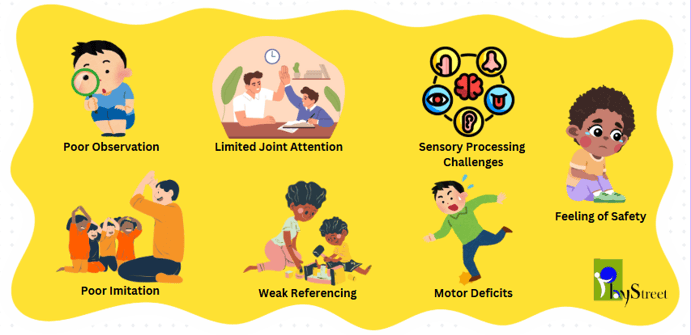



Coregulation is the foundation of how children learn:
It helps them connect with you and the environment effortlessly.
It enables them to pick up skills implicitly, without needing step-by-step teaching for every single task.
It gives them the tools to learn how to learn, which is the most valuable skill of all.
When your child starts learning naturally, you’ll experience a transformation:
Less stress and pressure as a parent because you won’t feel like you’re constantly "teaching."
A child who is more independent, confident, and ready to navigate the world.
A family life that feels more balanced and joyful.
Are You Ready to Make this Change?
Imagine a program that doesn’t just focus on your child but empowers YOU as a parent. A program that equips you with the knowledge and tools to create an environment where your child can thrive, grow, and learn naturally.
✅ Do you want to shift from feeling overwhelmed to feeling empowered?
✅ Do you want to see your child grow into an independent, confident individual?
✅ Do you want to stop teaching every skill and instead create an environment for natural learning?
Let’s make this happen together. Join her program today and take the first step toward transforming your family’s journey with Autism.
If you're seeking guidance from Mini, you can choose any of the following programs she offers. Mini always begins with coregulation before addressing other developmental goals.
Step Up your Collaboration
4-Steps to Communication
Safe and Sound Protocol (SSP)
Relationship Development Intervention (RDI)
Rhythm. Regulation. Resonance.
UnderstandingSensory Integration
Kinetic360: Foundations of Motion


What is it?
A 12-week program designed to help parents to master Co-regulation, a crucial developmental foundation, with their child. Co-regulation is a social process where individuals adjust their actions based on their partner’s behaviours, essential for building spontaneous communication in children.
Why Co-regulation ?
Enhances Conversations: Both verbal and non-verbal interactions are forms of co-regulation.
Supports Speech Therapy: Vocabulary alone isn't enough; co-regulation is key for collaborative conversations.
Boosts Self-Regulation: Helps children manage their emotions and develop intrinsic motivation for social tasks.
Program Highlights:
11 On-Demand Videos
Assignments & Activities
12 Weekly Online Group Sessions
How it Works:
Each session covers different aspects of co-regulation.
Parents receive goals and submit videos for feedback from Mini in the online face-to-face meetings.




Step-Up Your Collaboration - Empower Your Parenting with Coregulation !


Who Should Join?
Ideal for parents of children with:
Behaviour issues
Low motivation
Resistance to activities
Transition difficulties
Poor receptive language
Social challenges
Severe anxieties


Rhythm. Regulation. Resonance - The 3Rs of human Spirit!
What is it?
A 24-week program to develop coregulation and understand sensory and motor foundations for individuals with Autism. Co-regulation is a social process where individuals adjust their actions based on their partner’s behaviours, essential for building spontaneous communication in children.
Sensory integration and motor foundations are crucial for individuals with autism as they help in developing motor skills, cognitive abilities, and social interactions. Effective sensory integration reduces behavioral issues and enhances daily functioning and independence.
Why Co-regulation ?
Enhances Conversations: Both verbal and non-verbal interactions are forms of co-regulation.
Supports Speech Therapy: Vocabulary alone isn't enough; co-regulation is key for collaborative conversations.
Boosts Self-Regulation: Helps children manage their emotions and develop intrinsic motivation for social tasks.
Program Highlights:
15 On-Demand Videos
Assignments & Activities
24 Weekly Online Group Sessions
How it Works:
Each month covers different aspects of co-regulation as well as understanding of sensory and motor challenges in individuals with Autism
Parents receive goals and submit videos for feedback from Mini in the online face-to-face meetings
Who Should Join?
Ideal for parents of children with:
Behavior issues
Low motivation
Resistance to activities
Transition difficulties
Poor receptive language
Social challenges
Severe anxieties
Sensory difficulties
Children in ASD
Program's Monthly Breakdown:
Month 1: Stepping into Guiding Relationship
Month 2: Stepping into Coregulation
Month 3: Understanding Sensory Processing challenges in Individuals with Autism
Month 4: Understanding Broadband Communication and Declarative Language
Month 5: Understanding fundamental Motor Impairment in Autism
Month 6: Coregulation in various domains and RCR (Regulate-Challenge-Reorganise) Patterns


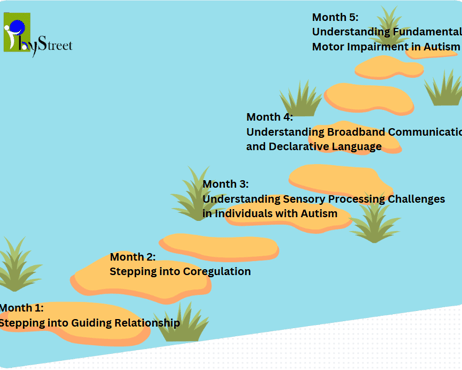

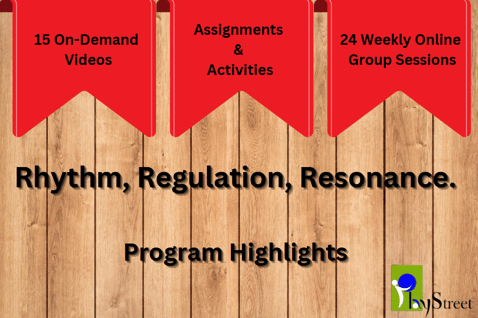



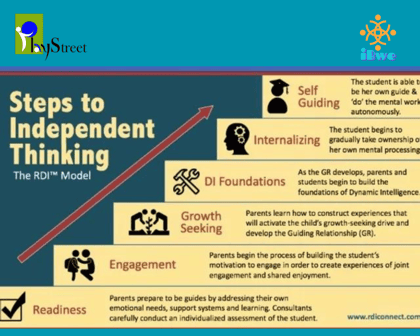

Relationship Development Intervention (RDI)
What is it?
Relationship Development Intervention (RDI) is a family-centred, behavioural approach that addresses the core challenges of Autism by focusing on building social and emotional skills. Unlike traditional therapies, RDI places parents at the centre of their child’s development, training them to be the primary guide in their child’s learning journey.
Key Objectives of RDI
RDI is built on the concept of Dynamic Intelligence—the ability to think flexibly, adapt to change, and understand multiple perspectives. The program focuses on six essential goals to strengthen social connections:
Emotional Referencing: Learning from the emotional experiences of others.
Social Coordination: Observing and controlling behavior for successful social interactions.
Declarative Communication: Using language and non-verbal cues to express curiosity, share feelings, and coordinate actions.
Flexible Thinking: Adapting and altering plans as situations change.
Relational Information Processing: Solving complex problems and understanding context.
Foresight and Hindsight: Using past experiences to anticipate and plan for future possibilities.
How RDI Works
RDI follows a step-by-step, personalized approach based on the child’s age and developmental level. The process begins with building a “guided participation” relationship between parents and their child, where the child is viewed as a “cognitive apprentice.”
Key components of RDI include:
Encouraging non-verbal communication through eye contact and gestures.
Introducing developmentally appropriate goals that evolve with the child’s progress.
Gradually increasing social complexity by pairing the child with peers who share similar abilities, and expanding to group interactions in real-world settings.
Strengthening neural connectivity to improve adaptability, social skills, and self-awareness.
Parents, teachers, and caregivers incorporate RDI principles into daily life, using positive reinforcement to promote growth.
Why RDI is Different
RDI targets the root challenges of Autism—poor observation, difficulty with flexible thinking, and limited social connection—by fostering natural learning and adaptability. The program empowers families to create environments where children can thrive emotionally, socially, and cognitively.
Intensity of RDI Programs
Families typically integrate RDI strategies into everyday life, spending a few hours per week practicing these techniques. The frequency and intensity are flexible, tailored to each family’s needs. The contract with consultant is for 1 year with meetings happening once week.
Learn More About RDI (www.rdiconnect.com)
RDIConnect provides resources, certified consultants, and community support for families implementing RDI. Explore Dr. Gutstein’s books, including Autism Aspergers: Solving the Relationship Puzzle and The RDI Book, to dive deeper into the program.
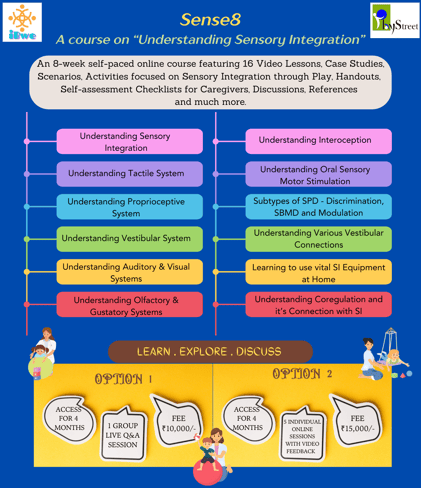

Sense8 – An online self-paced course on “Understanding Sensory Integration”
What is it?
Ever wondered why some kids love the feeling of sand between their toes while others can’t stand it? Or why does your classroom turn into chaos during a fire drill? Imagine struggling with everyday tasks because your brain can't process sensory information correctly. For many, this is a daily challenge.
Sensory integration is the key to understanding these unique experiences. It helps us make sense of how our brains interpret and respond to sensory information from the world around us. When this process doesn’t work smoothly, it can lead to big challenges in behavior, learning, and everyday activities. But here's the good news: with the right knowledge and strategies, you can help turn sensory struggles into sensory strengths!
How Does It Work?
The goals of the course are:
Master Sensory Integration
Understand how our brains process sensory information
Discuss why sensory integration is important for behavior, learning, and daily life.
Spot Sensory Processing Issues
Identify the signs and symptoms of sensory processing disorders.
Learn to tell the difference between different types of sensory challenges.
Recognize common behaviors linked to sensory issues.
Design Sensory-Friendly Spaces
Create sensory-friendly environments in any setting.
Explore equipment and resources that help with sensory integration.
Use strategies to reduce sensory overload and enhance experiences.
Collaborate and Advocate Like a Sensory Champion
Work with professionals, parents, and caregivers to support sensory challenges.
Advocate for sensory-friendly practices in schools and communities.
Join a supportive community dedicated to improving sensory integration.
Put Theory into Practice with Real-Life Case Studies
See sensory integration in action with real-life examples.
Participate in hands-on activities and assignments.
Reflect and discuss to reinforce your learning and apply your new skills.
Learning Objectives
By the end of this course, you will:
Understand sensory integration and its importance.
Develop and use effective strategies tailored to individual needs.
Create and maintain sensory-friendly environments.
Work well with others to support sensory challenges.
Advocate for sensory-friendly practices in various settings.
Who Can Attend
Parents of toddlers and preschoolers
Parents of school-aged children experiencing difficulties in the classroom
Parents of children with a diagnosis of Autism, ADHD (Attention Deficit Hyperactivity Disorder), OCD (Obsessive and Compulsive Disorder), ADD (Attention Deficit Disorder), PDA (Pathological Demand Avoidance), ODD (Oppositional Defiance Disorder), Feeding Disorders, and other developmental disorders
Parents of adolescents exhibiting aggressive or compulsive behaviors potentially linked to sensory or psychological issues
Therapists seeking a holistic approach (including speech therapists, occupational therapists, physiotherapists, and behavioral therapists)
Medical professionals
Our Sensory Integration Course is designed to give you the tools and insights you need. Whether you're an occupational therapist, a teacher, a parent, a psychologist, a doctor or just someone interested in making a difference, this course will empower you to support those with sensory processing challenges. You'll learn how to create environments where individuals with sensory issues can thrive, and discover practical techniques that can be used immediately.
Course Delivery: Learn from Anywhere!
Our Sensory Integration Course is fully online, allowing you to learn at your own pace and from the comfort of your home. Here’s what you can expect:
Flexible Learning: Access course materials anytime, whether you’re an early bird or a night owl.
Engaging Video Lessons: Enjoy clear and concise video lectures that make complex concepts easy to understand.
Interactive FAQ sessions: Join live sessions to ask questions, engage in discussions, and connect with instructors and fellow students.
Hands-On Activities: Participate in practical assignments and case studies to apply what you’ve learned.
Supportive Community: Connect with a vibrant group of learners, share experiences, and collaborate in our online forum.
Easy Access to Resources: Find all course materials—readings, videos, and more—available online for easy reference.
Self-Paced Progress: Move through the course at your own speed, taking your time as needed.


Safe and Sound Protocol (SSP) -
What is it?
The Safe and Sound Protocol is an evidence-based therapeutic tool designed to reset the nervous system and return it to safety. Designed to work with other therapeutic approaches and modalities, the SSP features specially filtered music that stimulates the vagus nerve.
Suitable for children and adults, the SSP has demonstrated benefits for individuals with trauma, anxiety, sensory processing differences, autism and much more.
How Does It Work?
The Safe & Sound Protocol (SSP) is the only practical application of Polyvagal Theory, and is designed to improve sound sensitivities and auditory processing, behavioural state regulation, and social engagement behaviours through specially-filtered music.
The SSP allows for the repatterning of neural networks and improved regulation of the autonomic nervous system (ANS) for lasting change.
Based on hierarchical recruitment of the ANS, the SSP trains the middle ear muscles to tune-in to cues of safety signalled by the frequencies of human voice, which stimulates the social engagement system through the neural network associated with listening.
Who Is It For?
The SSP is suitable for children and adults, and has been designed to work with a diverse variety of therapeutic approaches and modalities. Its effectiveness has been proven in a wide range of studies including clinical trials involving children with autism, along with numerous case studies demonstrating effectiveness with emotional regulation, trauma, anxiety and more.
Duration: Minimum 30 days to maximum 90 days (depends on the client’s regulation). It is 15 hours of the program that needs to be done integrated with Coregulation and Sensory and motor input.
Developed by Dr. Stephen Porges, founder of the Polyvagal Theory, the Safe and Sound Protocol is a non-invasive acoustic vagus nerve stimulator that helps your clients connect with themselves, others, and the world from a foundation of physiological safety.
Clients experience the SSP playlists through over-the-ear headphones which can be delivered in-clinic or remotely.
Step 1: Engage the ventral vagal complex through the neural network associated with listening.
Step 2: Shift the nervous system into safety using the SSP’s algorithmically filtered music.
Step 3: Administer therapy to a physiologically and psychologically available client.
A non-invasive listening therapy for your client’s unique journey to better nervous system regulation.


Learn More About the Science Behind the SSP
https://integratedlistening.com/polyvagal-theory/
The SSP interrupts chronic states of nervous system defence by stimulating the neural networks associated with listening.
The SSP uses algorithmically filtered music focused on the frequency range of the human voice that alters the way sounds are interpreted.
This ushers the nervous system out of a defensive (fight, flight or freeze) state and into a socially engaged (ventral vagal) state.


Communication is at the heart of human connection, and for children, it begins with play, interaction, and engagement with their environment. PlayStreet presents 4 Steps to Communication, a structured yet flexible program designed to help children develop play, communication, cognition, and language skills in an interactive and meaningful way.
Led by Mini Dwivedi Gopinathan, this initiative brings parents into the learning process, equipping them with practical tools and strategies to enhance their child's communication. A key component of the program is PlayTalk, an innovative approach available on the Android platform, co-created by Mini herself. Through this integrated method, children can experience a guided yet natural way to strengthen their communication abilities.
4 Steps to Communication: A Holistic Approach to Play, Language, and Cognition
What Makes 4 Steps Unique?
A Parent-Centered Approach: Weekly interactive discussions help parents understand their child’s communication needs and provide step-by-step guidance to foster better interactions.
Play-Based Learning: Children learn best through play, and this program integrates fun activities that encourage turn-taking, joint attention, and meaningful engagement.
Cognitive and Language Development: Beyond communication, the program also focuses on building cognitive flexibility, problem-solving skills, and structured language use to help children express themselves more effectively.
Ease of Implementation: Parents can incorporate the strategies into daily routines, ensuring that learning is continuous and natural rather than feeling like a structured therapy session.
Why Communication Matters
Effective communication is essential for children to build relationships, express their needs, and develop confidence in social settings. Children who struggle with communication may face challenges in making friends, understanding emotions, or expressing their thoughts.
The 4 Steps to Communication program ensures that parents and caregivers have the right tools and guidance to support their child's journey towards effective communication.
By creating a flow in interactions, parents can help their children connect with the world more meaningfully and with ease. Whether a child is just starting to communicate or needs additional support in language development, this program offers a structured yet adaptable framework that grows with the child’s needs.
Get Involved!
If you are a parent looking for an effective way to support your child’s communication development, this program is for you! Join 4 Steps to Communication and explore new ways to make learning engaging, fun, and impactful for your child.



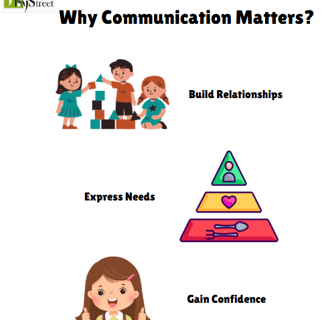

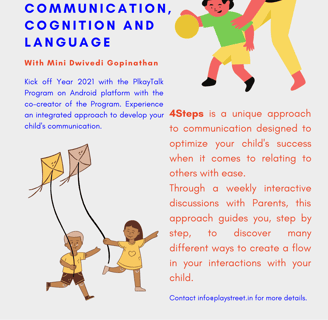
What It Is
Kinetic360: Foundations of Motion, is a comprehensive motor development program specifically designed for children with Autism and other developmental challenges. This holistic program takes children back to the core foundations of motor development through a series of structured, engaging, and scientifically backed activities. By addressing developmental milestones, sensory-motor integration, primitive reflex integration, and vision therapy, the program helps children build strong motor, cognitive, and sensory foundations for learning and growth. The program incorporates rhythm-based music and movement, oral sensory-motor stimulation, and balance and coordination training to support overall development.
Kinetic360: Foundations of Motion
Why It Is Needed
Motor and sensory integration play a critical role in a child’s ability to learn, communicate, and interact with the world. For children with Autism, challenges with motor planning, reflex integration, sensory processing, and visual perception can significantly impact their daily functioning. Often, delays in foundational motor development and unintegrated primitive reflexes contribute to difficulties in fine motor skills, balance, coordination, attention, and emotional regulation.
Kinetic360 bridges these gaps by addressing the root causes of these challenges. By providing a structured and engaging program, children are empowered to enhance their motor abilities, regulate their emotions, and improve their overall quality of life.
Program Highlights
Primitive Reflex Integration: Activities aimed at resolving retained reflexes to build a strong foundation for movement and learning.
Sensory-Motor Components: Exercises targeting proprioception, vestibular input, and tactile processing for better sensory integration.
Developmental Movements: A series of movements that mimic developmental milestones, such as crawling, rolling, and balancing.
Balance and Coordination Training: Fun and engaging activities to improve postural control, bilateral coordination, and gross motor skills.
Vision Therapy and Visual Perception: Exercises to enhance eye tracking, visual-motor coordination, and spatial awareness.
Rhythm-Based Music and Movement: Using rhythm and music to build motor timing, sequencing, and attention skills.
Oral Sensory-Motor Stimulation: Strategies to improve oral motor skills for better feeding, speech, and regulation.
How Does It Work?
Kinetic360: Foundations in Motion is structured as a progressive program that addresses the unique needs of each child.
Assessment: The program begins with a comprehensive evaluation of the child’s sensory-motor profile, reflex integration status, and developmental milestones.
Customized Plan: Each child receives an individualized plan tailored to their strengths and areas of improvement.
Engaging Activities: The sessions are designed to be playful, interactive, and motivating for children, using tools like therapy balls, swings, music, and tactile objects.
Therapeutic Integration: The program integrates various evidence-based approaches, including sensory integration therapy, neuro-developmental therapy (NDT), rhythmic movement training, vision therapy, and developmental movement patterns.
Parental Involvement: Parents are guided on how to support their child’s development at home through simple exercises and routines.
Who Should Join?
Kinetic360: Foundations in Motion is ideal for children who:
Have a diagnosis of Autism Spectrum Disorder (ASD) or other developmental challenges.
Struggle with motor coordination, balance, and reflex integration.
Face sensory processing difficulties such as hypersensitivity or hyposensitivity.
Exhibit delays in fine or gross motor skills.
Need support in improving visual-motor skills and spatial awareness.
Have challenges with oral motor skills related to feeding, speech, or sensory regulation.
Benefits of the Program
Improved balance, coordination, and motor planning.
Better sensory integration for increased attention and emotional regulation.
Enhanced visual-motor and perceptual skills.
Resolution of retained primitive reflexes for smoother movement patterns.
Stronger foundations for academic and social success.
This program combines scientific methods with creative, child-friendly approaches to make therapy effective and enjoyable. Backed by research and rooted in developmental principles, Kinetic360: Foundations of Motion empowers children to unlock their full potential in movement, learning, and self-regulation.
